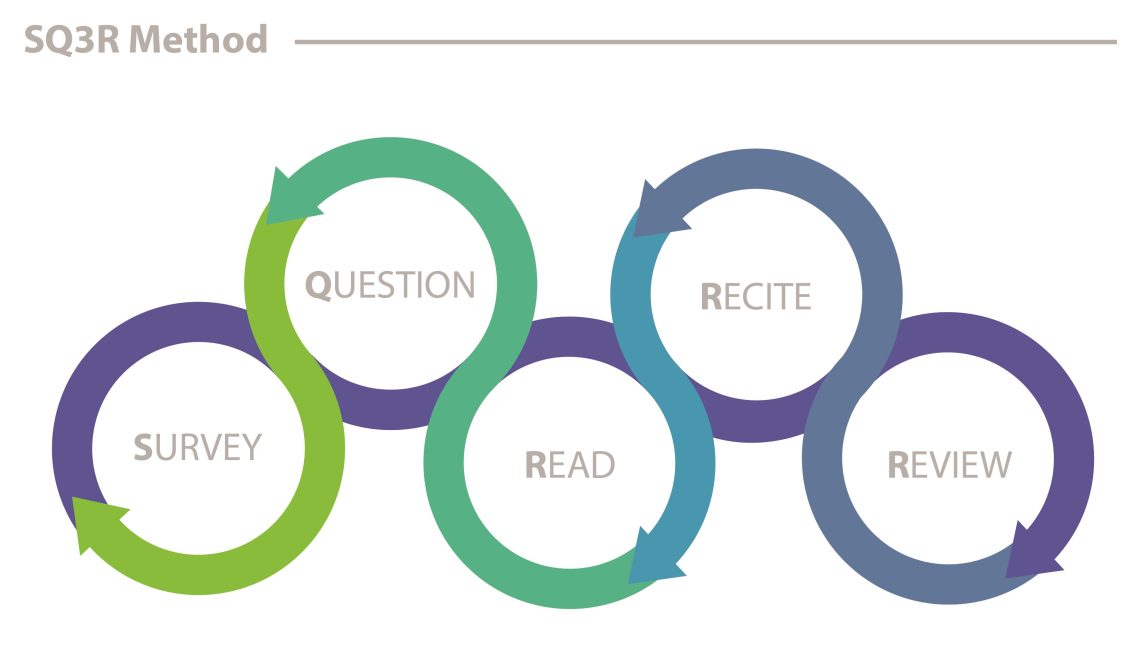Consider using the SQ3R method, a tried-and-true active reading approach for efficiently tackling college-level material. SQ3R stands for Survey, Question, Read, Recite, and Review. Below is a summary of the SQ3R method. You may also watch our Reading Actively video for additional step-by-guidance.
Survey
Take a moment to survey the chapter or article. This means previewing the titles, headings, sections, diagrams, and other content. It’s taking a quick look to get a sense of what you’re about to read. This also can help you estimate how long it will take to do the reading, which is important from a time management perspective.
Question
During the surveying process, ask yourself some questions. You would have already asked yourself, “Why was this reading assigned?” Examples of more targeted questions can include:
- “What are the big ideas or intended “takeaways” from this reading?”
- “How does the information in this reading relate to what I’ve already learned in class or what I already know?”
It can also be helpful to ask questions related to a section heading. For example, if the heading is, “The War of 1812 Begins,” it will take less than 30 seconds to ask yourself questions such as: “Who was involved?” “Why did the war begin?” “Where was the war fought?” By asking these questions, it activates the brain in a way that will motivate you to look for those answers!
Read
Begin to read, with the goal of a few paragraphs or one section at a time (depending on how dense the reading is). Search for the answers to your questions as you go along.
While not a component of the traditional SQ3R method, another strategy we recommend incorporating into the reading process once you’ve started: listen for cues. If you are paying full attention while reading, your brain will begin to find connections to what you already know, understand, or have experienced. For example, while reading you may “hear” your brain say, “Hey, that reminds me of…” This is your brain’s way to actively connect the new information from the reading to existing memories. It may seem random in the moment, such as, “Hey, that reminds me of that episode of Game of Thrones!” Make sure to write it down in the margin. By documenting these connections as you read, you’re helping the brain with the learning process. It also will make it much easier to trigger those connections again when you review the reading later before an exam or writing assignment. This strategy of paying attention to cues is also extremely helpful with note-taking in class.
Recite
After reading a few paragraphs or one section as described above, stop reading and take time to recite. This means summarizing the section in your own words, as if you are sharing the main ideas with someone who never read it. If you can recall and explain the key information (great!), move to the next section. If not, why bother moving forward, since you have not taken away what you need from the reading. In that case, go back and try again before moving forward.
Review
Once you’ve arrived at the end of the chapter or article, take just a few moments to review. Use your own words to summarize the most important aspects of the reading, and remind yourself why it is important to the course and your overall learning. This can be done in writing, out loud to somebody else, or to yourself. The key is to “get it out” of your head to avoid the illusion of knowing.

*Return to the Study Skills & Learning Strategies homepage

